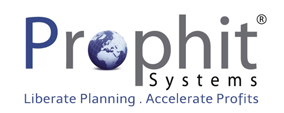MERGERS & ACQUISITIONS AND SALES FORECASTING

When it comes to forecasting strategic acquisitions the need for containment can often result in an organisation’s planning functions not being directly involved in the processes. Initial scoping and feasibility is done at high level, and then project teams dive into risk assessments and due diligence functions.
At what point should the plans of these acquisitions be included into an existing planning system?
Scenario
Recently a Prophit Systems’ client successfully acquired a segment of a competitors business, thereby increasing their market share. To keep the details confidential, only a handful of people were involved in the financial modelling, and due diligence process.
When details of the acquisition became public knowledge the information provided was sparse and only available from the company’s senior management team. This created a number of costly problems that could have been easily avoided.
When Prophit Systems was asked to get involved, the client had realised that the sales figures that they had expected were not materialising.
In order to understand the cause of this discrepancy our team needed to compare the detailed sales to the expected sales. Unfortunately, the sales forecasting only existed at consolidated levels in balance sheets. The vendor had not provided detailed sales forecasts but rather historic sales figures.
To gain insight into where the problems were occurring, we built a forecast based on the historic sales. This forecast was detailed to the SKU, location and customer (SKULC) level. Having this level of granularity enabled us to slice the forecast vs. actual comparisons by item, by customer and by location to identify where underperformance was occurring.
It quickly became evident that the underperformance was localised to one account manager and another significant customer. Once the source of the issue was identified the Sales Manager was able to get to the root cause of the problems, and take appropriate action.
Now armed with a detailed forecast the Sales Manager was able to rapidly understand how the new business was performing, and where the hot spots were. Having a consolidated forecast of their finished goods requirements, they were also able to construct accurate projections of their raw material requirements.
The company’s acquisition also saw its total product volume increase by some 40%, and this led to an increase in the overall raw material required by the new-look business. Having detailed information about the consolidated material requirements our team leveraged this information to instigate a round of raw material price negotiations between the company and its suppliers.
Lessons Learnt
- Obtain detailed forecasts as early as possible in your M&A transactions.
You will need this to build management targets, to help the transition and to facilitate the speed uptake of the management issues - Use these forecasts to chart your progress, and manage the transition of incorporating the new business. This is a risky time, where clients may jump ship. You need to manage the transition carefully.
- Your raw material volume discounts thanks to the increased volume demand in an acquisition can be significant. The sooner the data is available to the various teams within the supply chain the earlier these discounts can be brought to bear.
